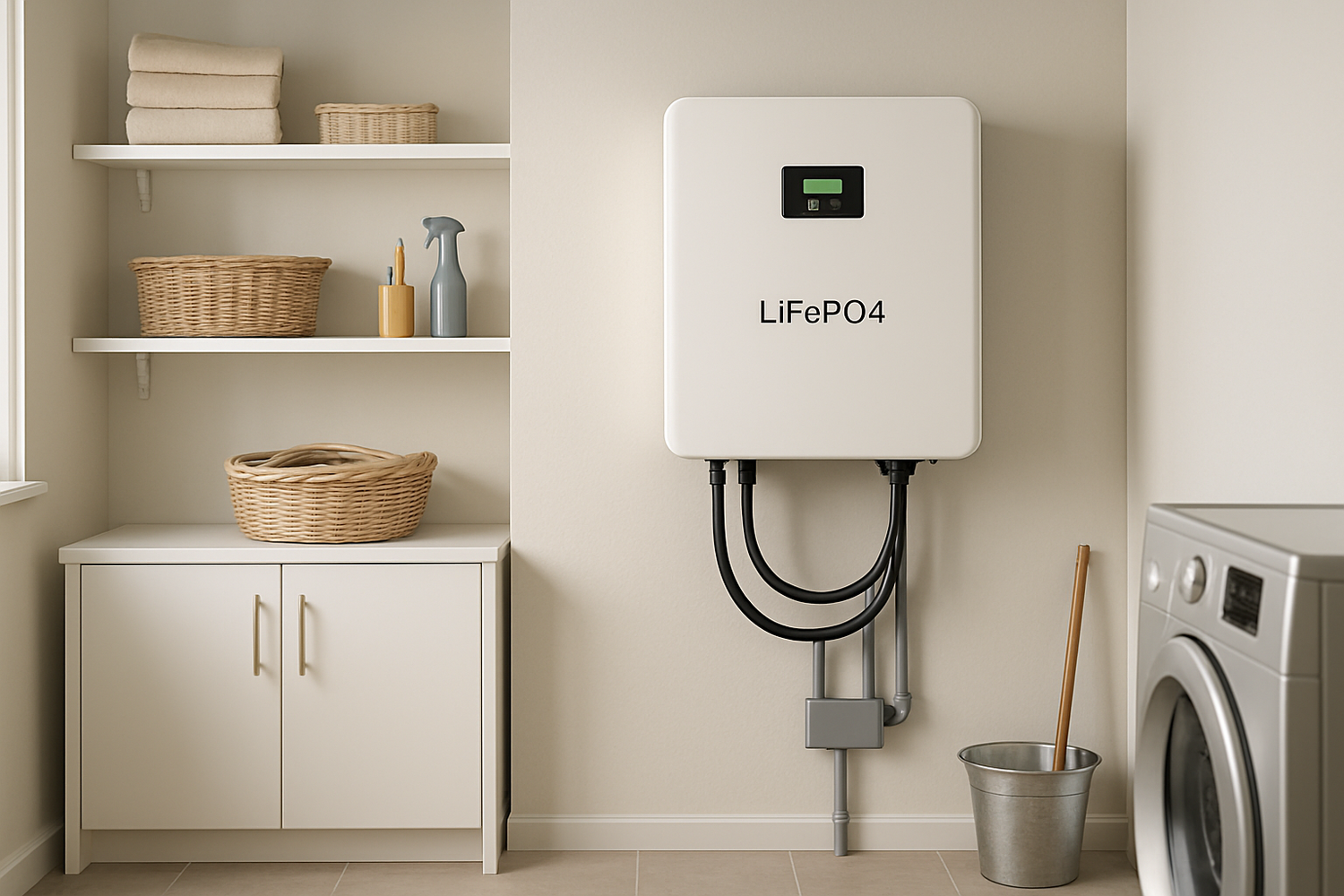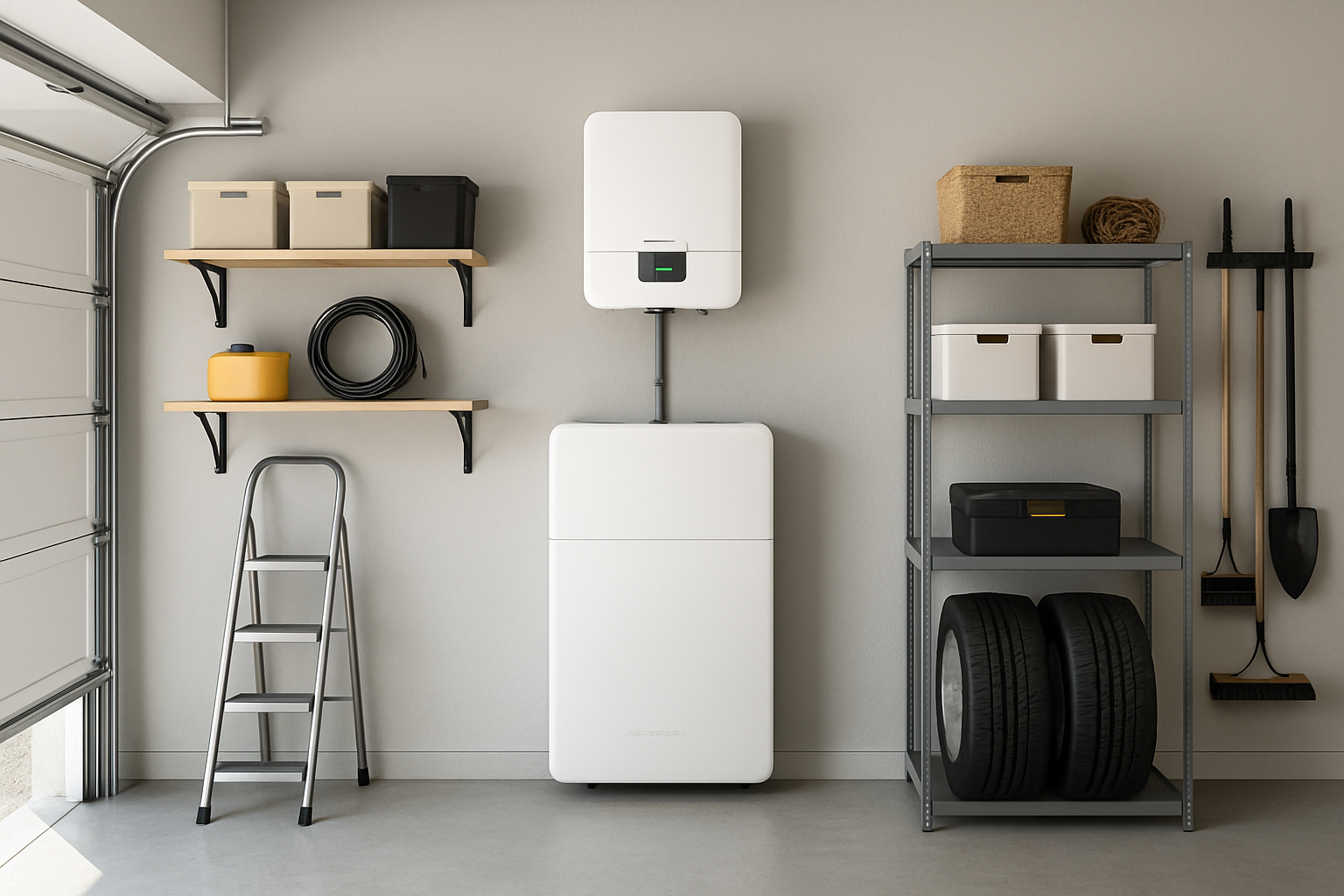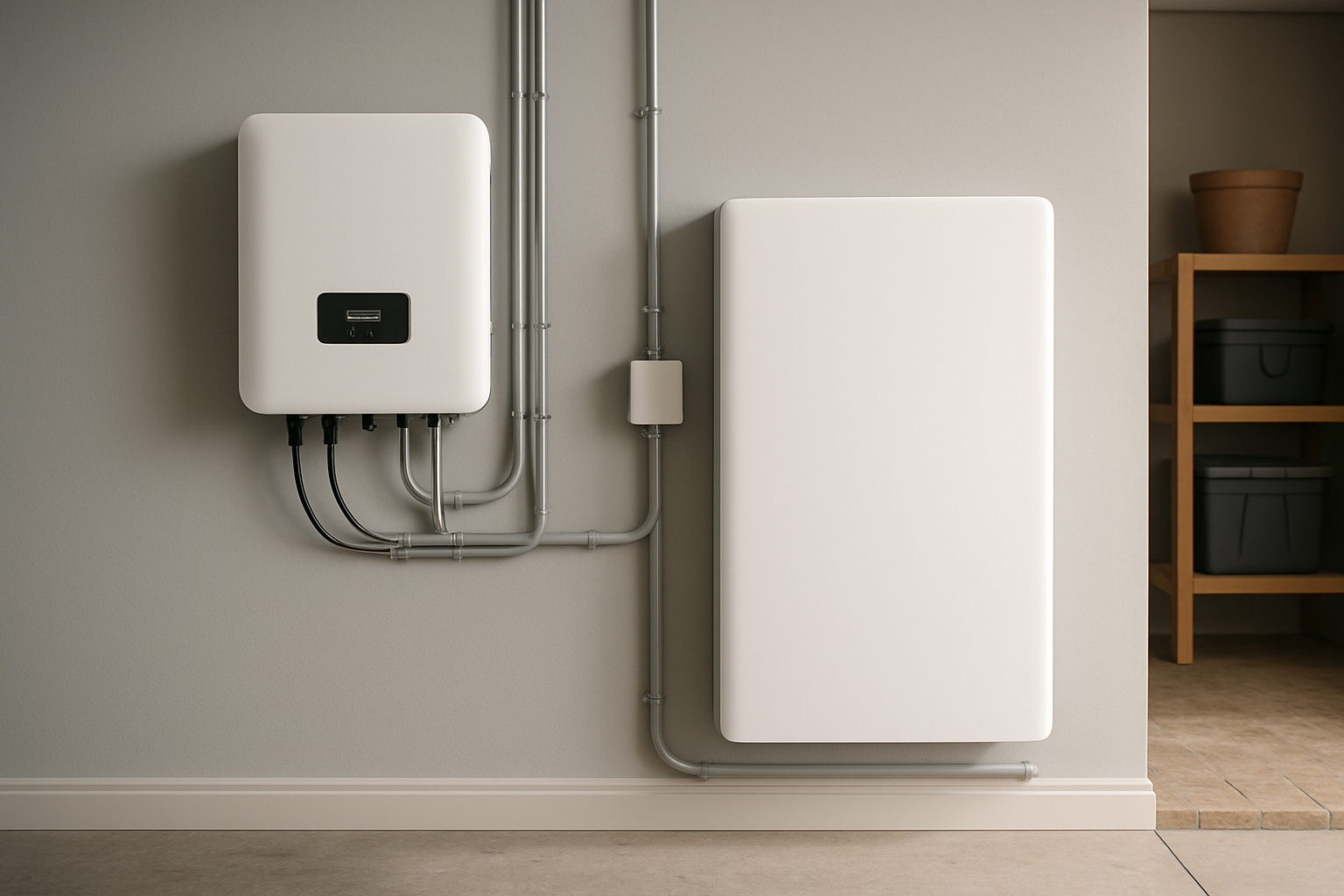Choosing a LiFePO4 battery is a smart move toward energy independence. Yet, the performance and safety of your home energy storage system depend heavily on one critical factor: its location. Proper siting is not just a recommendation; it’s a core component of maximizing your return on investment and ensuring long-term, trouble-free operation. This guide provides clear, practical steps for selecting the ideal spot for your battery.
Foundational Principles of Battery Placement
Before choosing a room, you must consider the environmental conditions that allow a LiFePO4 battery to thrive. Three factors stand above the rest: temperature, ventilation, and accessibility.
Temperature: The Performance Multiplier
LiFePO4 batteries have a preferred operating temperature range, typically between 20°C and 25°C (68°F to 77°F). While they can function outside this narrow band, extreme temperatures introduce significant penalties. High heat accelerates cell degradation, permanently shortening the battery’s lifespan. Conversely, charging is often disabled by the Battery Management System (BMS) in freezing conditions (below 0°C or 32°F) to prevent damage. A stable, moderate climate is the key to unlocking the full cycle life of your investment.
Ventilation and Airflow: A Non-Negotiable Safety Feature
Even though LiFePO4 batteries are known for their safety and do not produce emissions during normal operation, they still generate heat while charging and discharging. Adequate ventilation and clearance around the unit are essential for heat dissipation. Obstructing airflow can cause the system to overheat, leading to reduced efficiency and, in extreme cases, triggering safety shutdowns. Always follow the manufacturer's specified clearance requirements—usually several inches on all sides.
Accessibility and Maintenance
The ideal location for your battery should be easily accessible for installation, routine inspections, and potential maintenance. Placing a unit in a tight crawlspace or behind bulky, immovable objects creates unnecessary complications for technicians. You need to ensure that visual inspections of connections and system status indicators are straightforward.
Prime Locations for Your Home Battery Installation
With the core principles in mind, let’s evaluate common installation locations. Each has distinct advantages and challenges that you must weigh carefully.
The Garage: A Common but Cautious Choice
Garages are a popular choice due to available space and separation from primary living areas. However, they often lack insulation, leading to significant temperature fluctuations that can stress the battery. They also present risks of physical impact from vehicles and exposure to dust and moisture. If you choose the garage, position the battery away from vehicle paths, preferably on a raised platform, and consider an insulated cabinet to mitigate temperature extremes.
Basements and Utility Rooms: The Indoor Champions
For most homes, a basement or dedicated utility room offers the best environment. These locations typically provide stable, moderate temperatures year-round, are protected from the elements, and are situated close to the main electrical panel. The primary concern in a basement is potential humidity or flooding. Ensure the area is completely dry and install the battery system well above the floor to safeguard against water damage.
Outdoor Installations: A Specialized Approach
Placing a battery outdoors requires a robust, purpose-built solution. The system must be housed in a NEMA 3R or higher-rated enclosure to protect it from rain, sun, and dust. Managing temperature becomes the biggest challenge, often requiring active heating or cooling systems within the enclosure, which adds complexity and cost. According to the International Energy Agency, challenges in lifetime and system cost are key barriers to the wider deployment of battery storage; improper outdoor siting can exacerbate both issues. As noted in the IEA's The Power of Transformation report, different storage technologies have unique characteristics, and LiFePO4's performance is closely tied to its environment.
Safety Requirements and Code Compliance
Proper siting goes beyond optimizing performance; it is a fundamental safety requirement. Adhering to local and national codes is mandatory for a secure and compliant home battery installation.
Understanding Clearances and Physical Protection
Electrical codes mandate specific clearances around energy storage systems. This means maintaining a safe distance from flammable materials, heat sources like furnaces or water heaters, and habitable spaces. If the battery is installed in an area with vehicle traffic, such as a garage, protective bollards may be required to prevent accidental impact.
The Importance of Professional Installation
A home energy storage system involves high voltages and complex integration with your home's electrical system. Professional installation ensures that all wiring, circuit protection, and grounding are handled correctly according to the National Electrical Code (NEC) and local regulations. The U.S. Department of Energy emphasizes that proper installation is a critical layer of energy storage safety, preventing electrical hazards and ensuring system reliability.
The Role of Certifications
Always choose a battery system that is certified to recognized safety standards, such as UL 9540. This certification verifies that the battery, inverter, and other components have undergone rigorous testing as an integrated unit. As highlighted in an IEA report on Energy and AI, battery production relies on complex supply chains where meeting performance and safety standards is paramount.
How Siting Directly Impacts Your ROI
The location of your battery has a direct and measurable impact on its financial return. A well-sited system performs better, lasts longer, and operates more safely, protecting your investment.
Maximizing Lifespan Through Optimal Conditions
A battery's lifespan is measured in charge cycles, and that number is heavily influenced by its operating temperature. By placing your battery in a temperature-stable environment, you minimize degradation and can achieve a greater number of cycles, extending its useful life and lowering the levelized cost of storage. As detailed in analyses on solar storage performance, maintaining optimal conditions is key to achieving the longevity promised by manufacturers.
| Temperature | Potential Impact on Lifespan | Performance Effect |
|---|---|---|
| Below 0°C (32°F) | Charging is disabled by the BMS to prevent damage | No charging capability, reduced output power |
| 0°C - 20°C (32°F - 68°F) | Good | Slight reduction in efficiency and capacity |
| 20°C - 25°C (68°F - 77°F) | Optimal for maximum cycle life | Peak efficiency and capacity |
| Above 30°C (86°F) | Accelerated degradation and reduced lifespan | Reduced efficiency; BMS may limit power to prevent overheating |
Improving Efficiency and Performance
A battery operating within its ideal temperature range is more efficient. This means less energy is wasted as heat during charging and discharging cycles. Higher efficiency translates directly into more usable energy from your solar panels and a greater reduction in your utility bills, accelerating your return on investment.
Avoiding Costly Mistakes
Improper siting can lead to a cascade of negative outcomes, including voided warranties, premature system failure, or dangerous safety events. The cost of replacing a damaged battery or repairing associated electrical systems far outweighs the initial effort of selecting a proper location. A strategic approach to placement is your best insurance policy.
A Final Check on Your Installation Plan
Placing your LiFePO4 battery is a foundational step in building a reliable home energy storage system. By prioritizing a location that offers temperature stability, proper ventilation, and easy accessibility, you create the right conditions for success. This careful planning ensures your system operates safely, performs efficiently, and delivers a strong return for years to come, moving you closer to true energy independence.
Frequently Asked Questions
Can I install a LiFePO4 battery in a closet?
This is generally not recommended. Closets lack the necessary ventilation for heat dissipation, which can compromise both safety and performance. Always consult the manufacturer's installation manual and local fire codes, as most require specific clearances and airflow that a closet cannot provide.
How far should the battery be from my main electrical panel?
While there is no single required distance, placing the battery reasonably close to the main panel is beneficial. Shorter cable runs reduce voltage drop and energy loss, which improves overall system efficiency. However, this should not come at the expense of safety clearances. A qualified installer can determine the optimal placement that balances efficiency with code compliance.
Do I need to worry about my LiFePO4 battery freezing in the winter?
Yes. Although LiFePO4 chemistry is robust, you should not charge the battery in freezing temperatures (below 0°C or 32°F), as this can cause irreversible damage. Most modern systems have a Battery Management System (BMS) that automatically prevents charging in these conditions. Siting the battery in a location that consistently remains above freezing is essential for reliable, year-round operation.





Leave a comment
All comments are moderated before being published.
This site is protected by hCaptcha and the hCaptcha Privacy Policy and Terms of Service apply.